10 Bucket-List Trips Based in the U.S.
These incredible destinations—featured in the book The Bucket List: 1000 Adventures Big & Small should be the first ones you check off.
By Kath Stathers
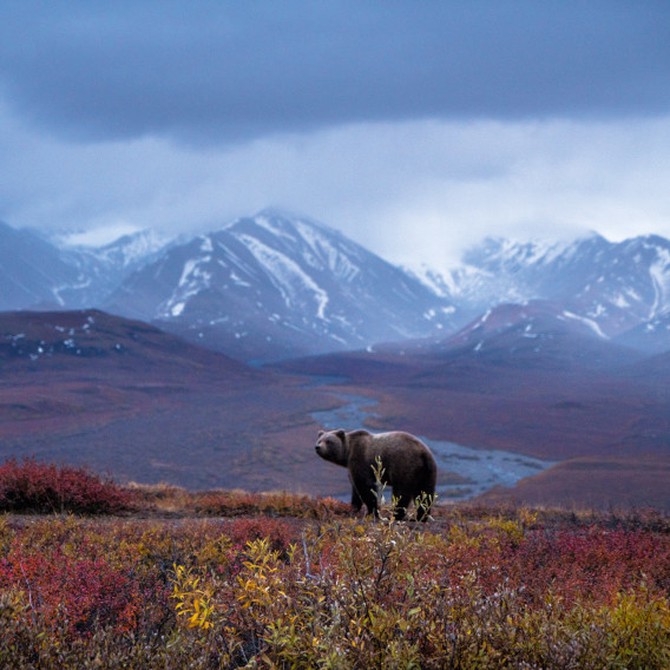
Photo: Chris Burkard
1. Track the Alaskan Big Five.
DENALI NATIONAL PARK AND PRESERVE, ALASKA, US
When: May to September
Latitude: 63.3333°N Longitude: 150.5000°W
Denali National Park and Preserve is home to the northern hemisphere's "big five": grizzly bear, caribou, gray wolf, moose, and Dall sheep. The park takes its name from its crowning glory, Denali. This towering centerpiece is the tallest mountain in North America, measuring 20,340 ft (6,200 m). Until 2015, it was known as Mount McKinley.
Northeast of Denali lies Sable Pass, described as a "crossroads for bears," and the open tundra of the pass is the perfect place for you to spot the sandy-beige or brown fur of grizzly bears as they search for berries. You can also spot caribou at these crossroads—these wild reindeer will eat near grizzlies, but they know to choose a vantage spot above any bears, should a swift getaway be required.
For the predatory gray wolf, a little more stealth and cunning may be required. A food source, such as caribou at Sable Pass, is a good place to start. Sighting a wolf is rare, but you might hear its haunting howl.
As the brown, earthy tones of moose hide blend perfectly with its woodland habitat, the best way to find one is to find something it eats, such as bushes, tree needles, or leaves. Moose also enjoy the water, so look out for antlers poking out from the park’s shimmering lakes.
To find elaborately horned Dall sheep, the best advice is simple: look up. is sure-footed native species can be found among the high-altitude ridges seeking out the lush mountain flora and vegetation.
Above: A grizzly bear in the Denali National Park and Preserve, Alaska, US
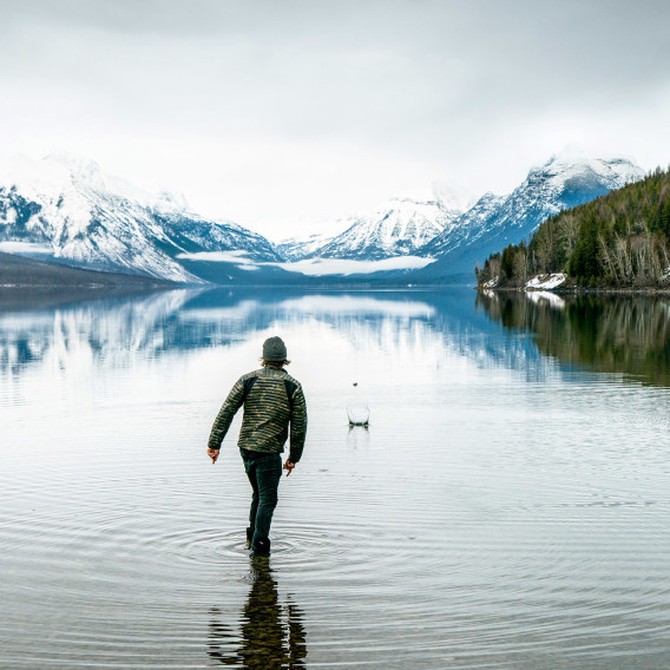
Photo: Chris Burkard
2. Skim a stone in a pristine setting.
MONTANA, US
When: All year
Latitude: 48.5787°N Longitude: 113.9225°W
Ever managed to master the art of bouncing a flat stone over water? One of the most picturesque places to do so is on Lake McDonald in Glacier National Park, Montana. If you're particularly good, you could also join the annual World Stone Skimming Championships in Easdale Island, Scotland—the winner's stone must travel the farthest distance and bounce at least three times.
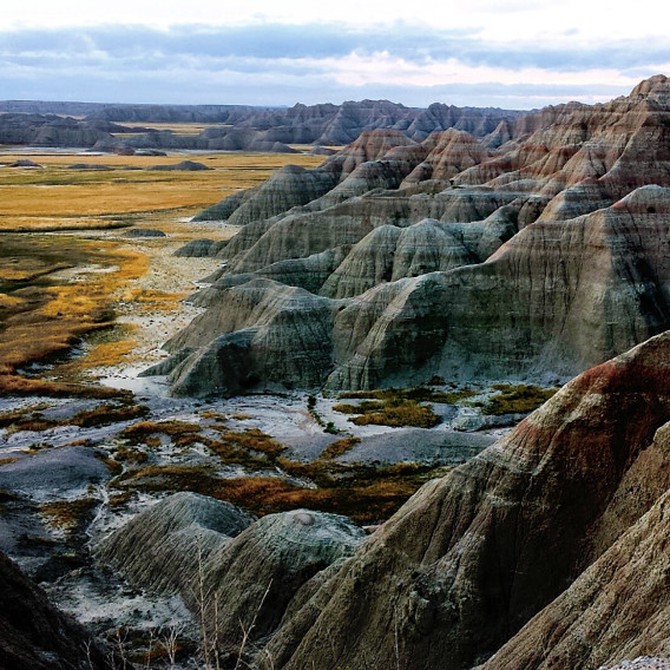
Photo: Robyn Hodgson/EyeEm/Getty
3. Go up, up and up in a helicopter.
BADLANDS NATIONAL PARK, US
When: All year
Latitude: 43.8554°N Longitude: 102.3397°W
The eerily named Badlands rises up out of South Dakota's prairie and the sharp pinnacles and deep canyons of striated rock can't fail to capture the imagination as you approach. They're spectacular from ground level, but go up above them on a tourist's helicopter ride and you get all the scale and majesty of the rocks.
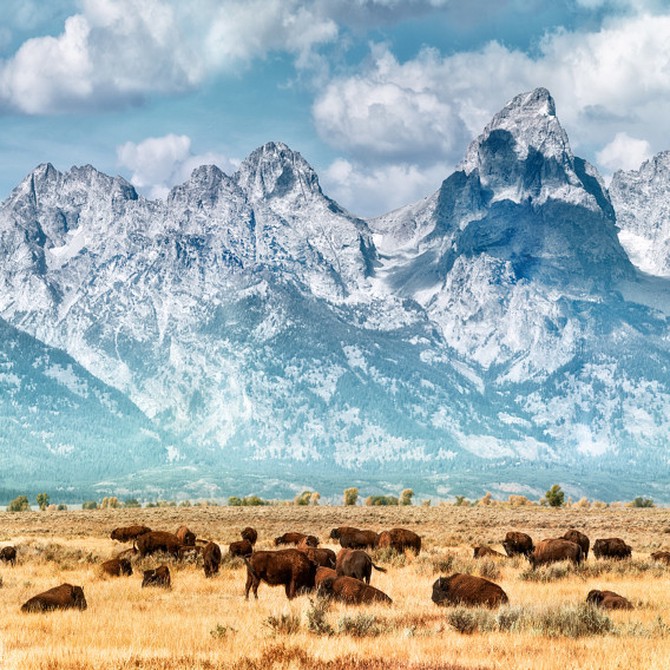
Photo: Matt Anderson Photography/Getty
4. Take a trip through the Rockies.
COLORADO AND WYOMING, US
When: All year (but not in winter)
Latitude: 40.3771°N Longitude: 105.5255°W (Estes Park, Colorado)
There's no right route to drive through the Rockies—every way you go gives a new stunning view, another geological curiosity, some more incredible wildlife. The Rocky Mountains stretch for more than 3,000 mi (4,828 km) from western Canada to New Mexico, and the area in Wyoming and Colorado must be at the heart of any great American road trip here.
Highway 34 is a good place to start, right where it enters Estes Park. Known as the Trail Ridge Road, it climbs above the tree line for 11 mi (18 km), through an eerie lunar-esque landscape of alpine tundra. The views are unparalleled from up here—the Rockies sweep before you in all directions.
It's easy to see why Rocky Mountain National Park is among the most visited national parks in the United States. Don't miss the 300 mi (483 km) of trails, mountain views, and lakes that wait to be explored.
Grand Teton is only 10 mi (16 km) south of the majestic Yellowstone. Here, you'll find (or hopefully not) wolves, grizzly bears, and moose, although the park’s hot springs and geysers are the major draw, of course.
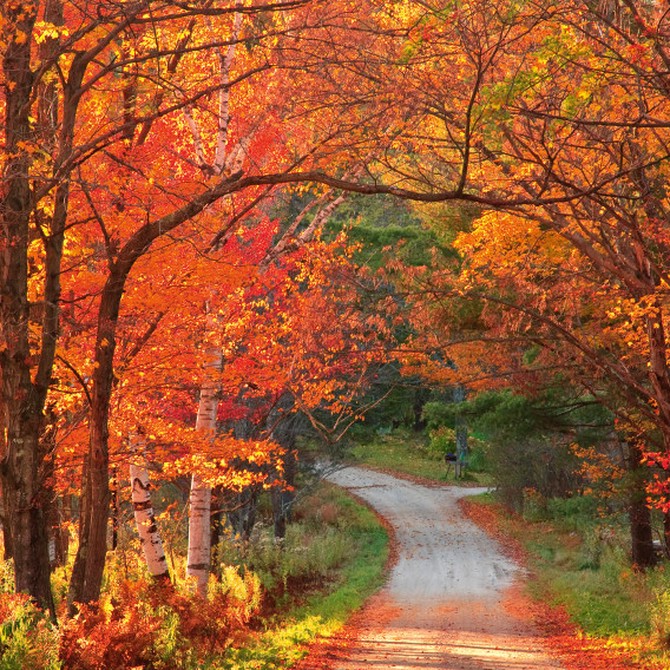
Photo:Enfi/Shutterstock
5. Bike through the fabulous fall of Vermont.
THROUGHOUT VERMONT, US
When: Late September to early October (for peak color changes)
Latitude: 44.5588°N Longitude: 72.5778°W
Vermont is rightly famous for its falls, as its foliage dramatically explodes into a million dierent hues of orange and red. The best way to bask in these palettes is by bike, and you'll find well-signposted trails for every skill level through this leafy wonderland. Maine and Upstate New York are also spectacular in fall.
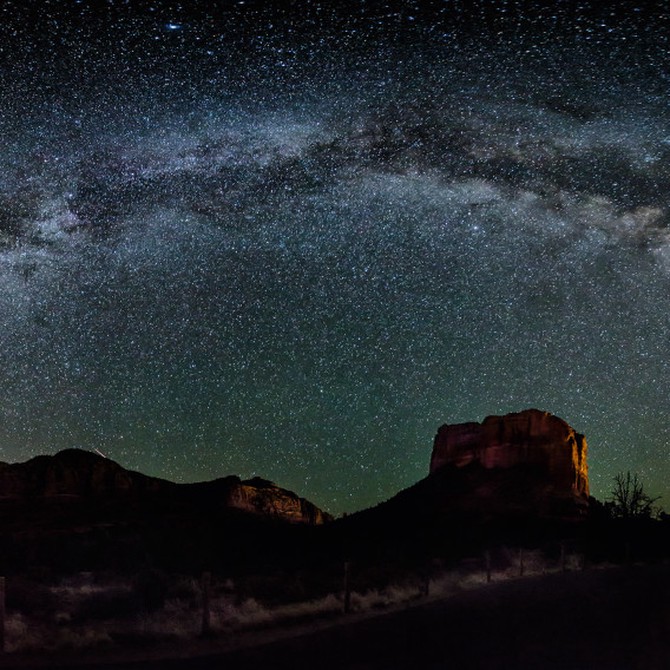
Photo: Scott Stulberg/Getty
6. Witness the magnificent Milky Way.
SEDONA, ARIZONA, US
When: All year
Latitude: 34.8697°N Longitude: 111.7609°W
The magnificent milky way is best enjoyed in a place like Sedona. It's a stunning part of Arizona, anyway—drawing bikers, hikers, and climbers from all over the globe—but this area is really special after sundown, when all eyes turn upward. They're proud of their lack of light pollution here—it's one of just eight areas worldwide that has been honored by the International Dark-Sky Association, and from 4,600 ft (1,402 km), it is extremely romantic to gaze upon a shimmering sheet of stars here. You could also catch the celestial magic of a "blue moon"—the additional full moon that occasionally appears in an annual cycle. It is always a time of lunar celebration, but at any time of the cycle, a nighttime moon hike into places like Boynton Canyon will provide skies that astonish, often soundtracked by the eerie cry of a pack of coyotes.
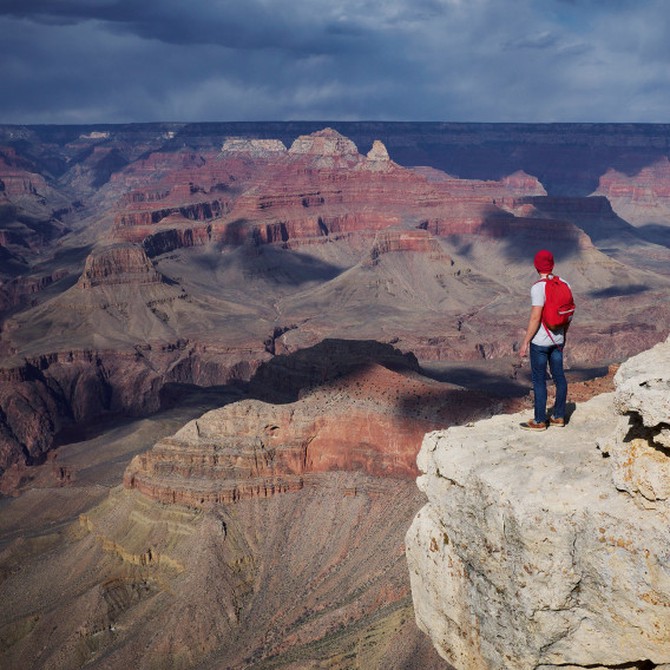
Photo: Matthew Gee
7. Hike to the bottom of the Grand Canyon and back up again.
ARIZONA, US
When: Spring and fall are ideal
Latitude: 36.0544°N Longitude: 112.1401°W
It is one of Earth's most impressive geological formations, hewn into shape over millennia by the Colorado River, and it's easy to see why the Grand Canyon is considered a holy site by the Native American people. It's also the ultimate place to hike. The spectacular views go without saying—this is a true wonder of the world—but there's so much more to learn about the canyon during a stroll through it; it may look arid, for example, but there are 1,737 known different species of vascular plants to look out for.
The classic hike is the rim-to-the-river-and-back trip, which must always involve an overnight stay. A full descent involves setting off from an elevation of around 10,000 ft (3,048 m) and carefully winding down the trails. It can be bone jarring, but the sense of solitude, wilderness, and silence you experience makes any aches or pains worthwhile.
The ever-changing environment as you descend into the canyon is a truly great pleasure. And there are many types of animals to spot, including bald eagles, beavers, coyotes, bobcats, tarantulas, six kinds of rattlesnakes, and even mountain lions (that, thankfully, tend to stay well away from humans).
After staying overnight in the canyon (many head to Phantom Ranch), the return trip—uphill—is far more demanding than the descent. Any hike in the Grand Canyon should be very carefully planned, and most people report that they found it more difficult than they had first expected. More than 250 people are rescued annually!
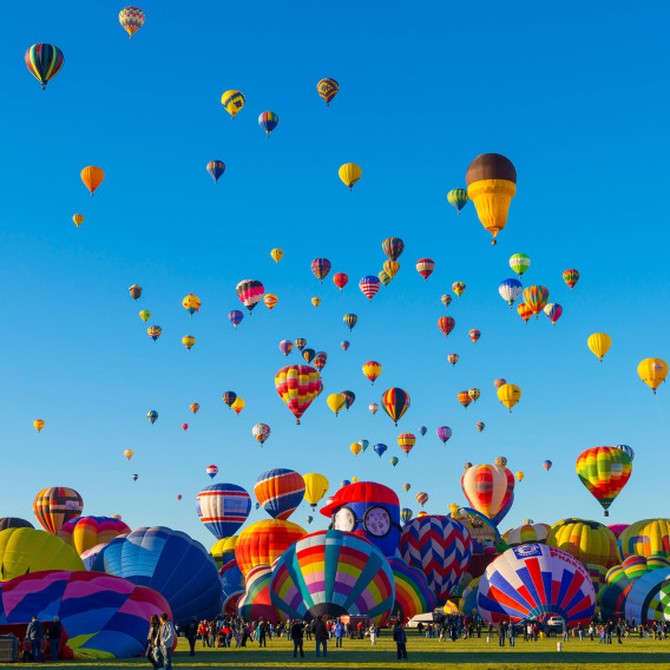
Photo: Alan Copson/Getty
8. Go up, up and away in a hot air balloon.
ALBUQUERQUE, NEW MEXICO, US
When: October
Latitude: 35.1961°N Longitude: 106.5975°W
Every year in the first week of October, hundreds of hot-air balloons gather in Albuquerque for the International Balloon Fiesta. It is the largest balloon festival in the world, so expect lots of spectacular sights in the sky and plenty of enthusiasts talking hot air.
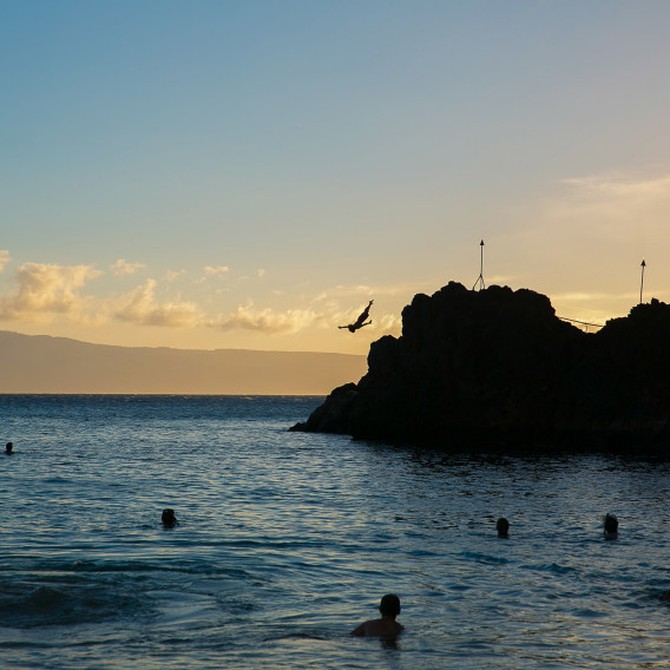
Photo: Tina Case Photography/Getty
9. Cliff jump like a king.
MAUI, HAWAII, US
When:All year
Latitude: 20.9178°N Longitude: 156.6966°W
Follow in the footsteps of a legendary king by taking a leap of faith off Maui's famous Pu'u Keka'a ("Black Rock") into crystal clear waters. Splitting sundrenched Ka'anapali Beach, the imposing volcanic outcrop of Black Rock looms over the deep, blue Pacific.
The great King Kahekili, who ruled Maui from 1766 to 1793, was a big fan of cliff jumping at Black Rock and was celebrated by locals, who believed only a blessed person could jump off the rock unharmed. Partly as a result, the activity has become something of a national sport in Hawaii, and every evening a lone diver recreates the king's feats in a sunset ceremony.
Watch others launch themselves off the rock, or better still, take the leap yourself and plunge into the ocean below. Choose a spot where locals line up to leap for a less risky place to jump.
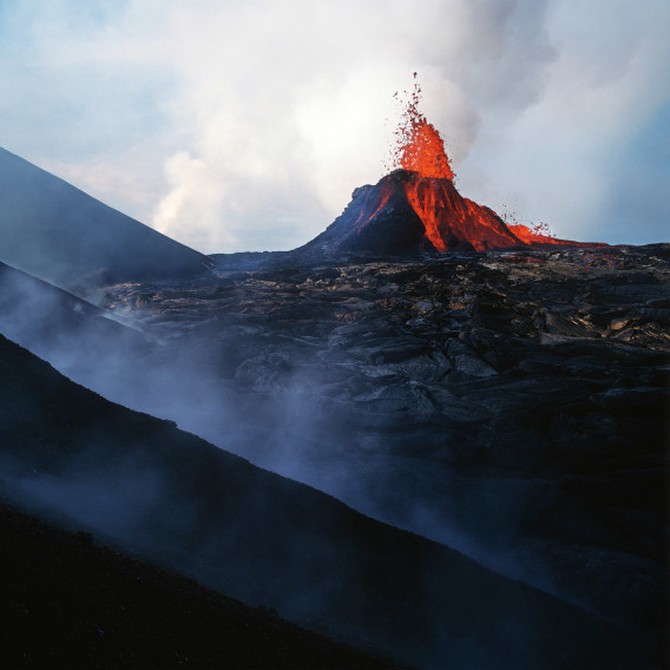
Photo: Brad Lewis/Getty
10. See volcanoes erupting in front of you.
HAWAII, US
When: All year
Latitude: 19.4100°N Longitude: 155.2864°W
There is something primal about the natural power of a volcano spilling lava. On the "Big Island" of Hawaii, you can see the lava flowing at Hawaii Volcanoes National Park or the Kalapana viewing area, with the Halema'uma'u crater particularly striking at sunset.

Excerpted from The Bucket List: 1000 Adventures Big & Small edited by Kath Stathers. Copyright © 2017 Quintet, an imprint of The Quarto Group. Reprinted with permission by Universe Publishing, a division of Rizzoli International Publishing, Inc.
Published 08/02/2017
As a reminder, always consult your doctor for medical advice and treatment before starting any program.

